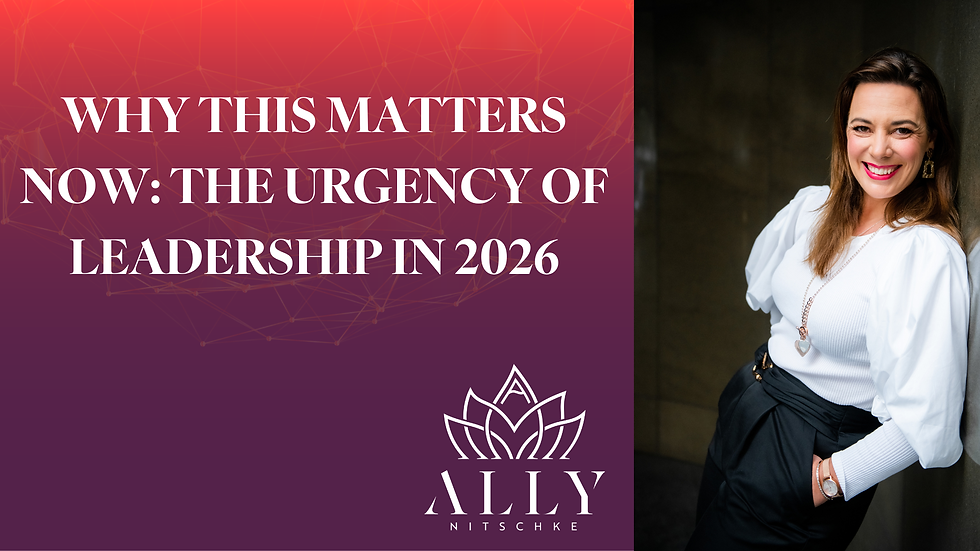Burnout is Not Just a Wellbeing Issue. It’s a Business Risk
- allynitschke
- Oct 9
- 2 min read
Updated: Nov 24
I was speaking to a client last week who said "I think we'll get you in early next year Ally, the team are exhausted, I don't think we're going to get much out of them this side of Christmas."
What!?
There's still an entire quarter to go for the year. And it's really got me thinking about the cost of busyness, the cost of burnout and the cost of pushing things down the road.
When I ask leaders how their teams are doing, I often hear the same answer: “We’re busy, but we’re fine.”
But scratch the surface, and the truth is very different. People are exhausted. Engagement is low. Turnover is rising. And behind it all is one of the most under-recognised risks facing organisations today: burnout.
Burnout is Bigger Than Wellbeing
Traditionally, burnout has been treated as a personal wellbeing issue. Someone not coping. Someone who “just needs a break.”
But the reality is far more serious. Deloitte estimates workplace stress and burnout cost the global economy hundreds of billions of dollars annually through absenteeism, turnover, and lost productivity.
Here in Australia, Safe Work Australia reports that psychological injury claims cost three times more than physical injuries, and recovery takes four times as long.
Burnout isn’t just about wellbeing. It’s about performance, profit, and reputation.
The Leadership Responsibility
Burnout doesn’t happen in a vacuum. It happens in cultures where:
Busyness is rewarded more than progress.
Boundaries are blurred.
Leaders avoid tough conversations about workload and priorities.
Resilience without responsibility is exploitation. Leaders must take ownership of the systems, structures, and signals that drive burnout.
Radical Accountability in Action
This is where Radical Accountability comes in. It’s not about blame, it’s about leaders stepping up and owning their part.
Three ways to start:
Prioritise With Courage
Don’t ask your people to sprint in ten directions. Narrow the focus. Decide what matters.
Model Recovery
If you’re emailing at midnight or working through holidays, your team will follow. Model sustainable behaviour.
Redesign Workloads
Use data,meeting hours, leave balances, after-hours activity, to spot risks early. Don’t just “talk wellbeing” act on it.
A Challenge for You
This week, ask yourself: What signals am I sending my team about work, rest, and boundaries?
Are you modelling courage, or are you modelling collapse?
Because in the end, burnout isn’t an individual failure. It’s a leadership test. And the leaders who step up, who take Radical Accountability, won’t just protect their people. They’ll protect their culture, their reputation, and their results.
Here’s to building cultures where people can thrive,
Ally
If you would like to book in a time to speak with Ally: CLICK HERE.
Ally Nitschke is a best-selling Author, an award-winning Thought Leader and Speaker. She has been working with leaders and as a Leader for over 20 years.
She is on a mission to change the way we communicate at work, to lean into those uncomfortable conversations and lead with courage.
Ally is a Keynote Speaker at conferences, delivers Transformational Programs & highly engaging workshops as well as provides Executive Coaching.
In her spare time, she's mostly at the beach with her beautiful husband and 4 tiny people.




.png)










Comments